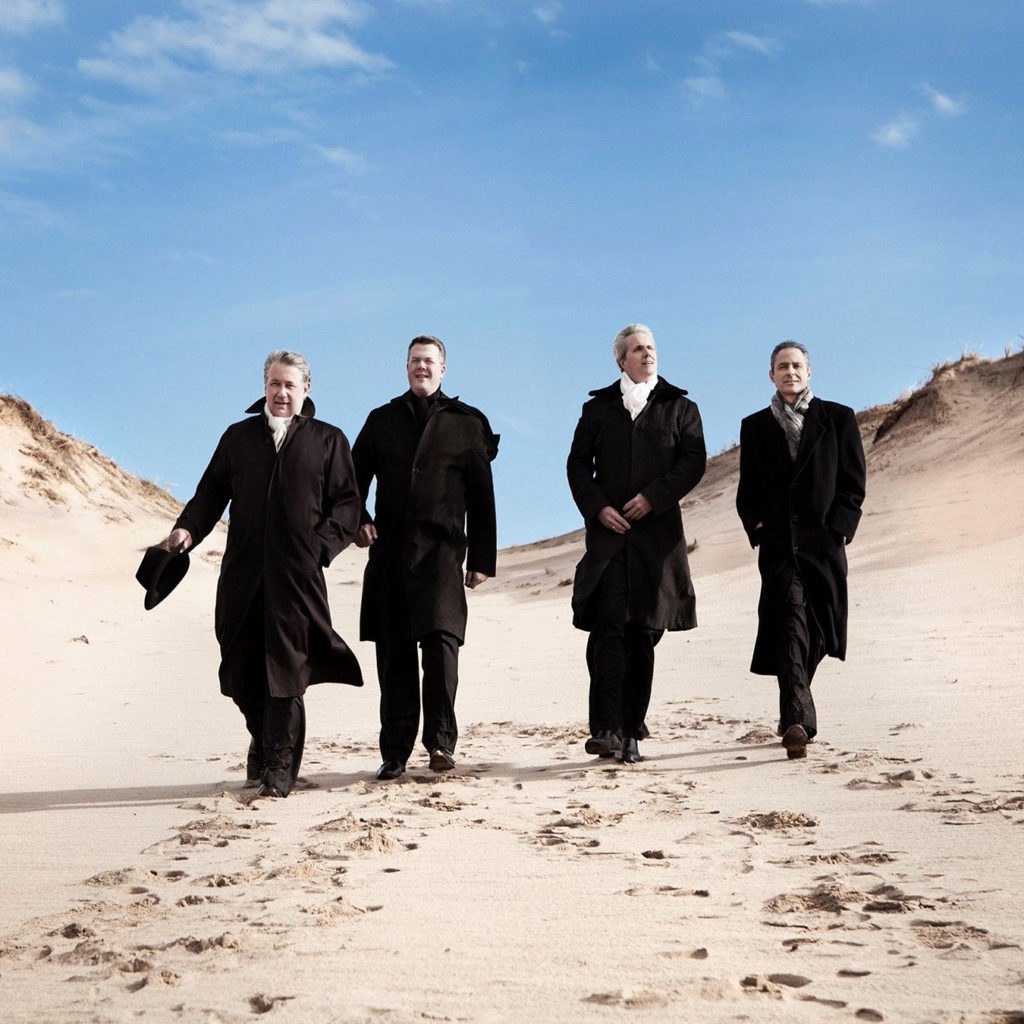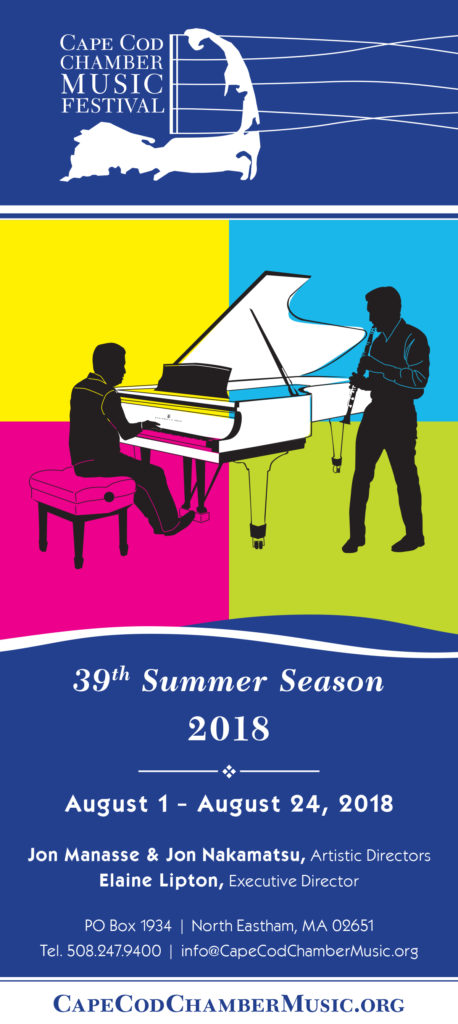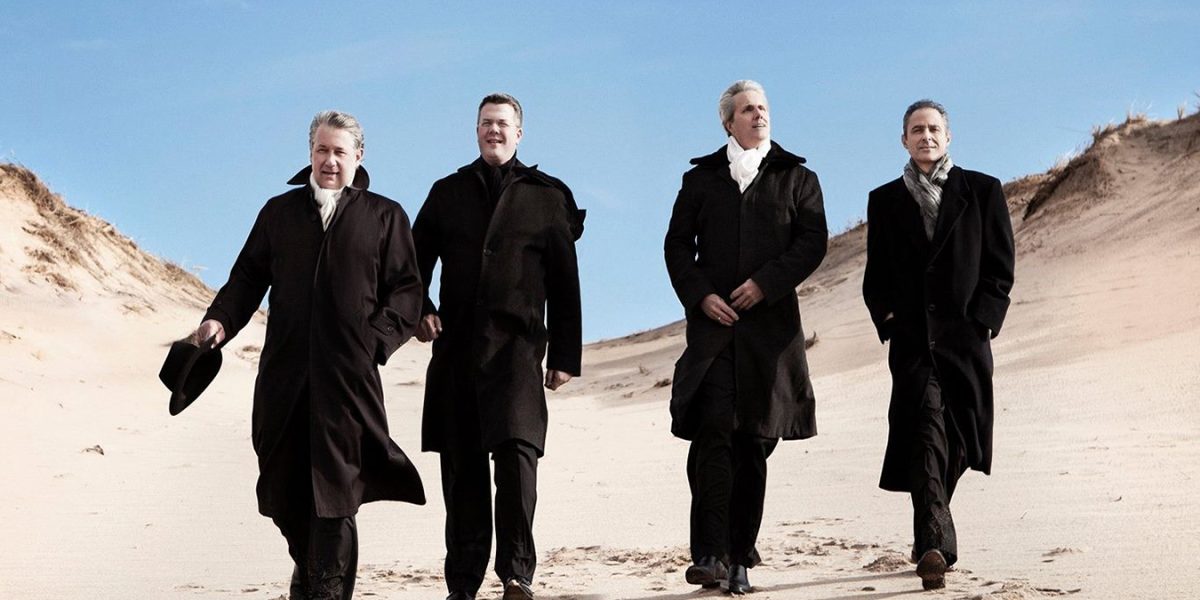 CAPE COD TIMES – A great thing about classical music performances: 90 percent of what you hear is extraordinary. These musicians don’t even get to the stage without being great, after all.
CAPE COD TIMES – A great thing about classical music performances: 90 percent of what you hear is extraordinary. These musicians don’t even get to the stage without being great, after all.
The downside: Finding enough superlatives to describe a performance like the Emerson String Quartet’s on Thursday night at Falmouth Academy, during the Cape Cod Chamber Music Festival.
Emerson’s pedigree speaks for itself. Almost four decades of performing together, nine Grammy Awards, countless recordings, residencies and honors. Match that resumé with two of the greatest quartets in history – Opp. 131 and 130 from Beethoven – and you see the problem. Superlative alert.
Both of these late quartets stand apart from almost everything else in the repertory because of their length, innovation and emotional probing. Of the two, the C-sharp minor (Op. 131), which opened the program, might be the more easy-listening of the two.
But only if seven movements, played without pause, including fugues, theme-and-variations, dance movements, scherzos and gorgeous melodies all fit into someone’s idea of “easy listening.”
No wasted energy here: Beethoven launches right into a fugue from the first notes. The violins– first chair (they alternate) Philip Setzer and second Eugene Drucker – share a rising and falling melody, and then viola (Lawrence Dutton) and cello (Paul Watkins) jump in. It’s a fugue built on emotion, exploring a minor key mood, rather than musical complexity.
Two brief movements – there are no breaks here, but the musical language shifts remarkably – lead to a long theme and variations, the central section both structurally and in complexity.
In Concert
What: Emerson String Quartet
Presented by: Cape Cod Chamber Music Festival
When: performed Thursday night
Where: Simon Center for the Arts, Falmouth Academy, 7 Highfield Road
Festival tickets, information:www.capecodchambermusic.org or 508-247-9400
 Again the violins share the theme. The variations roam far afield: One is formless, one almost entirely in four unison voices, and the last is incomplete – like the composer ran out of paper, or had to leave the room. A short coda sounds like a comic treatment of the whole process.
Again the violins share the theme. The variations roam far afield: One is formless, one almost entirely in four unison voices, and the last is incomplete – like the composer ran out of paper, or had to leave the room. A short coda sounds like a comic treatment of the whole process.
The scherzo has wonders of interaction – right up to a hairy treatment of the central figure, with all four players bowing right on the bridge for a couple measures. It’s another crazed, quasi-comic gesture that adds to the quartet’s color. The finale shifts suddenly to a major key right at the outro – a deft comment on the entire 45 minutes of music, in one succinct moment.
The playing was controlled and collaborative. The Emerson’s uniform sound – no grandstanding here – defines what quartet playing should be: four equals in deep conversation with each other.
After intermission, the B-flat major, Op. 130, with the original Grosse Fuge conclusion. Many commentators have waxed philosophical about this work; most describe it as Beethoven trying to communicate the impossibility of communication.
They could be right. Ideas get hinted at, then squelched. A theme in the opening movement returns as part of the deranged, multi-layered Grosse Fuge conclusion – almost 45 minutes later. The gorgeous, songlike Cavatina movement, as perfectly formed a melody as could be – it was one musical sample sent into outer space on Voyager, as a best example of human achievement – even comes with the marking “Beklemmt” (“Stifled”), a metaphor for Beethoven’s intent.
The composer reached for the unknowable, and this quartet worked to show us how how he did it. Greatness can be obvious, recognizable – but then slip away while describing it. Beethoven knew. Emerson does as well.
The next Cape Cod Chamber Music Performance will be Tuesday: “Piano Bash,” at the Cotuit Center for the Arts.
By Keith Powers







